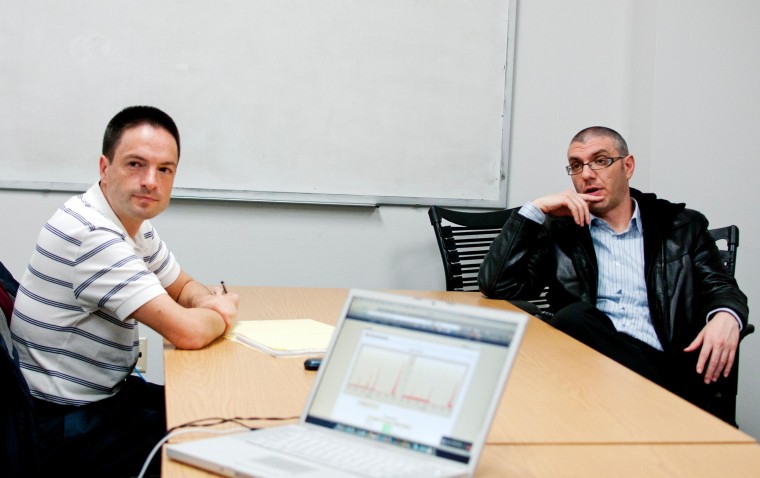
Engineering professor Michel Cukier and criminology and criminal justice professor David Maimon are members of a team of experts studying the behavioral patterns of hackers and other cybercriminals.
As hackers hide behind the screens of their computers, the anonymity of cyberattacks can leave victims frustrated and confused — but a team of university researchers is working to prevent attacks by revealing criminals’ common traits.
Although the Maryland Cybersecurity Center typically tackles technological developments and data pertaining to cyberattacks, a team of social scientists and engineers formed independently from the center to research similarities between attackers. While other research labs have studied profiles of hackers in the past, this team of 10 researchers is combining the separate skill sets of criminology and criminal justice and engineering professors for the first time to create criminals’ behavioral outlines and determine how exactly they execute their attacks.
“The goal of the collaboration is to be able to do a detailed comparison between how cybercriminals function compared to a criminal in the real world,” said researcher and engineering professor Michel Cukier. “Once we understand more in detail how the cybercriminal behaves, then we’ll be able to develop the quickest solutions, which … will be much more appropriate and much more efficient than current security solutions.”
On the heels of multiple cyberattacks this summer — such as those on Citigroup and Bank of America — team members said this research comes at a crucial time.
This unique perspective of fusing the technicalities of hacking with behavioral science is vital for understanding how and why cyberattacks occur, according to researcher and criminology and criminal justice professor David Maimon.
While the team of researchers could not reveal much information because it could affect their experiments, Cukier said the team uses bait computers to study the devices once they’re attacked.
“Once you have the technical component and understanding human behaviors, human deviance and criminal behaviors, we have a very good setting to study cybercrime,” Maimon said.
Although cyberattacks have been happening for more than a decade, the professors leading the research team said prior studies about cybersecurity have ignored the human element of the hacker as it relates to the attacks themselves; this is why their particular angle of the subject area is filling a vital gap, according to Maimon.
“When you study the field of cybersecurity you understand that solely technical solutions will probably not solve the problem,” Cukier said. “It becomes very silly when you build studies where you only look at the technical aspect but leave the human aspect out.”
The professors use data about Internet users to gain insight into a hacker’s mind, Cukier said. Though the team has no end date for its report, Maimon said its research will provide better information to protect individuals from cyberattacks, and the group will receive support from the Maryland Cybersecurity Center in the future.
“Our ability to work together means we can each contribute our personal knowledge in different areas,” said graduate criminology and criminal justice student Mariel Alper, who is part of the interdisciplinary research team. “We’re hoping to provide new and innovative ways that we can improve cybersecurity and get a better understanding of what the problems are and what the patterns of attacks are.”
marcot@umdbk.com



